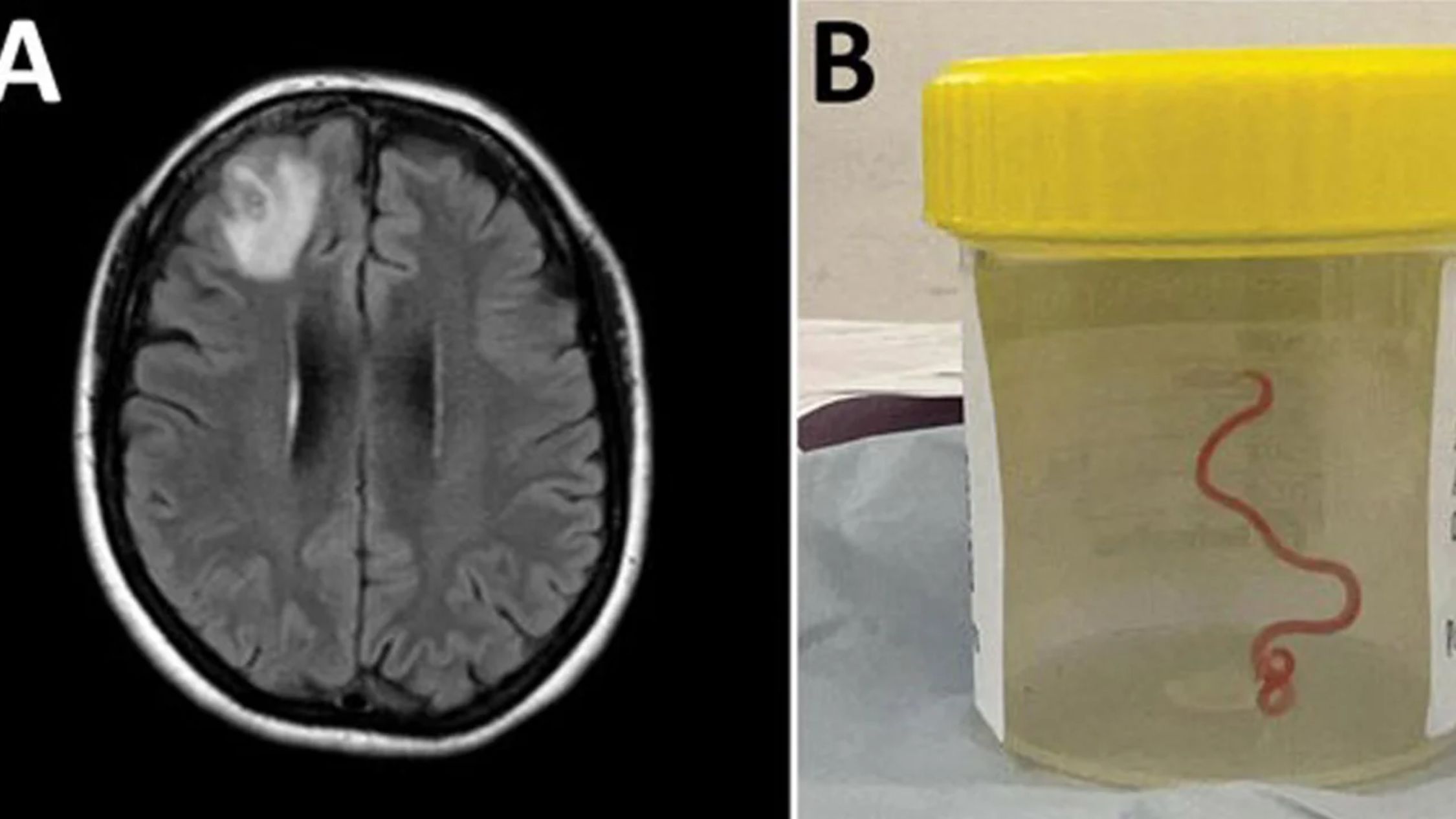(CNN) — When a 64-year-old Australian woman was admitted to the hospital for brain surgery, neurosurgeon Dr. Hari Priya Pandi didn’t expect to extract a 3-inch-long parasitic worm writhing in her tweezers.
“It’s only through my not-so-good horticultural knowledge that I see worms. They look scary to me, it’s not something I deal with,” Bondy told CNN. A human brain.
Sanjaya Senanayake, an infectious disease specialist at Canberra Hospital, told CNN that the discovery had sparked a frenzy to find out exactly what the parasite was.
A colleague from the hospital laboratory was able to contact an animal parasitologist from a government scientific research institute 20 minutes away, and found his unexpected response.
“We were able to send him a live worm and he tested it and identified it immediately,” Senanayake explains.
According to a press release from the Australian National University and Canberra Hospital, molecular tests confirmed it was the Opitascaris robertsii worm, which is commonly found in pythons.
“To our knowledge, this is the first case involving the brain of a human or any other mammalian species,” said Senanayake, a professor at the Australian National University.
According to the researchers, the patient lived near a lake area in southeastern New South Wales where carpet pythons live. Although he had no direct contact with reptiles, he probably got the worm from foraging on a native New Zealand leafy vegetable, which he cooked and ate.
Doctors and scientists working on his case speculated that a carpet python may have spread the parasite to vegetables through its feces, which the patient touched and then contaminated with food or other kitchen utensils.
How the worm was discovered
The woman was first admitted to a local hospital in late January 2021 after suffering three weeks of abdominal pain and diarrhea, a persistent dry cough, fever and night sweats.
After several months, her symptoms became forgetful and depressed, so she was sent to a hospital in the Australian capital, where an MRI revealed an abnormality in the right frontal lobe of her brain.
What usually happens is that Australian carpet pythons carry Opitascaris robertsii and shed the parasite’s eggs in their faeces, which are transmitted by plants eaten by small mammals and marsupials. At some point, pythons eat the same infected animal, and then the parasite lives inside the snake, completing the cycle.
In this case, Senanayake said, the patient may be an accidental host of the worm. The parasite is highly invasive and its larvae, or young, are suspected to have lodged in other organs of the female body, including the lungs and liver.
The 64-year-old woman suffered from amnesia and depression before undergoing brain surgery. (Credit: Hossain M/Kennedy KJ/Wilson HL)
The case highlights the growing risk of animal-to-human disease and epidemics, especially when people enter animal habitats.
“There are more opportunities for humans, domestic and wild animals to interact with each other and with plants. So this is another indicator that there will be more new epidemics in the future,” Senanayake said.
According to him, about 30 new infections have been discovered in the world in the last three decades. About 75% of emerging infections are zoonotic, meaning they spread from the animal world to the human world, including coronaviruses.
“This Opitascaris infection does not spread from person to person, so it does not cause an epidemic like SARS, covid-19 or Ebola. However, the snake and the parasites are found in other parts of the world, so it is possible. Other cases will be recognized in other countries in the coming years,” Senanayake said.
“The other message in this case is about foraging. Foragers should wash their hands after handling the collected material. Forage materials used for salads or cooking should also be thoroughly washed.”
Other tapeworm larvae
This case from Australia is quite different from recent reports of people who developed severe headaches due to the presence Tapeworm larvae in the brain.
This condition is known NeurocysticercosisLarval cysts can cause neurological symptoms when they form in the brain.
According to the US Centers for Disease Control and Prevention (CDC), people become infected with this parasite by ingesting eggs found in the feces of a person with tapeworms. In the United States alone, there are more than 1,000 cases per year.
Last year, a study revealed that a 25-year-old Australian woman Tapeworm larvae in the brain After a headache lasting more than a week.
An MRI of her brain led doctors to believe a tumor might be the cause of her pain, but after she operated to remove the lesion, they discovered it was actually a cyst filled with tapeworm larvae.





